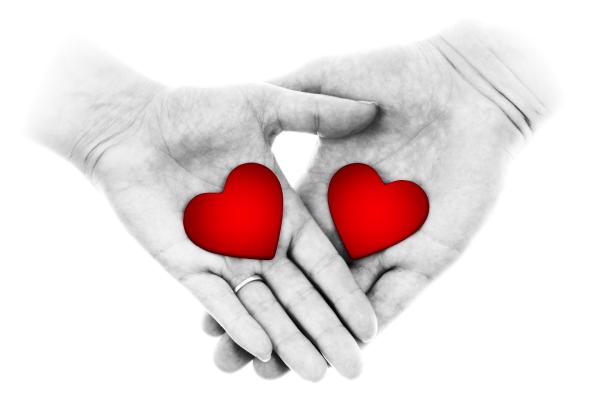In a miraculous example of not making the perfect the enemy of the good, two women’s lives were saved through ongoing innovation in organ transplant protocols and donation. At a time when every digital health product, new medication or device, biotech firm or health system purports each launch or announcement to be groundbreaking, revolutionary, or disruptive, it is astounding that the account of a heart donor and her recipient, both alive and at last week’s Transplant Games of America, barely made national news or the social media rounds (now or in 2016 when they underwent the rare “domino surgery” (1)).
This genuinely groundbreaking reality is one in a series of truly revolutionary events in the realm of transplant medicine, yet the attention it receives pales in comparison to most barely useful, often cumbersome med tech “advances” (think the implementation of the electronic medical record, see here).
Solutions seeking problems we don’t have seem to abound these days, as opposed to the other way around, so to see an array of methods being implemented to address donor organ shortages is a wonderful evolution that was previously unimaginable when I started my medical career (e.g. baby born from transplanted uterus, total penis and scrotum transplant). How modern medicine has stepped in and is continually assessing ways to address this need is quite remarkable (e.g. 3D printed organs though uncertain and in their infancy, HIV-positive to HIV-positive transplants). Stringent requirements have placed tremendous limitations on donor and recipient matching. For organs to be deemed eligible for transplant, they are required to fit into a tiny box of criteria that must then also meet the degree of illness and litany of standards necessary to be suitable for the recipient. Expanding opportunities for those who may donate while balancing recipient safety is the main goal, and has been quite challenging especially in the past. But, there is much reason to be hopeful today.
In addition, according to the United Network for Organ Sharing (UNOS),
“Deceased organ donors in United States exceeded 10,000 for first time in 2017… For the year, organs were recovered from 10,281 donors, representing a 3.1 percent increase over 2016 and an increase of 27 percent since 2007… This total is a 3.4 percent increase over 2016 and marks the fifth consecutive record-setting year for transplants in the United States. Record number of donor organs were recovered and transplants occurred for each of the four most common organs transplanted – kidney, liver, heart and lung.”
This is promising and suggests a cultural shift (see here).
In the tale of Linda Karr and Tammy Griffin, doctors took on the arduous task of modifying the standard swap-type surgery for two women who needed new hearts - thereby saving and enhancing both of their lives. They saw a problem and designed a solution. Karr, born with a heart defect that limited her significantly, was waiting on the transplant list for two years. Too sick to go on with much quality of life, but not sick enough to top that ever important list is an all too common story for many suffering from chronic, progressive disease. Enter Griffin, who was undergoing her own substantial health battles enduring the cumulative decline that accompanies her disease, Cystic Fibrosis (CF). She, too, was in need of a transplant. As a result of a shift in the position of her heart due to severely diseased lungs (which are a typical occurrence for patients with CF), she would need a double lung and heart transplant. When Griffin inquired as to whether she could donate her heart and was told yes, the rest as they say is history (see details here).
Multiple facilities refused to perform such a transplant on Karr, likely because of Griffin’s pre-existing condition that could have led to some less desirable effects on her heart. Those with CF, due to their extensive lung disease, can have secondary issues with their heart. The “perfect” heart donor for someone in need is typically believed to be a young, otherwise healthy person who has a sudden aneurysm rupture in their brain or a massive head trauma from an accident. That way, they have a pristine heart most suitable for transplant assuming blood type and compatibility standards are met.
But, Stanford was confident in performing the rare domino surgery. And, in this case, they were right. Griffin received her heart and double lung transplant from another donor (which is also quite rare) while Karr took Griffin’s heart. Because Karr does not have CF, it is unlikely she would face the same difficulties given she lacks the disease’s other manifestations (e.g. lung damage, pancreatic insufficiency, malnutrition). Both women are thriving and have become good friends.
This success at increasing meaningful second chances is a consequence of progress in our understanding of disease, breakthroughs in surgical techniques and circulatory support measures, ingenuity, dedication and the best there is in science and medicine. Disruption takes years, most of the time and with trial and error, and though it isn’t often as sexy as marketing campaigns or the routine self-inflation and societal elevation of Silicon Valley start-ups (think Theranos) it takes missteps, perseverance and sacrifice. Two years from now, I will still marvel at this transplant story as a reminder of what once seemed impossible being possible. Much work is already underway that could make the need for donors obsolete one day and I have seen enough in my medical career not to discount such a notion as science fiction - though how soon is a whole other conversation.
We are living in exciting times.
Note(s):
-
A “domino” transplant surgery involves a living donor also receiving an organ from another person as opposed to the traditional swap of donor to recipient. These rare domino transplant surgeries can occur with more people, consider the ten kidney transplant donation chain.




